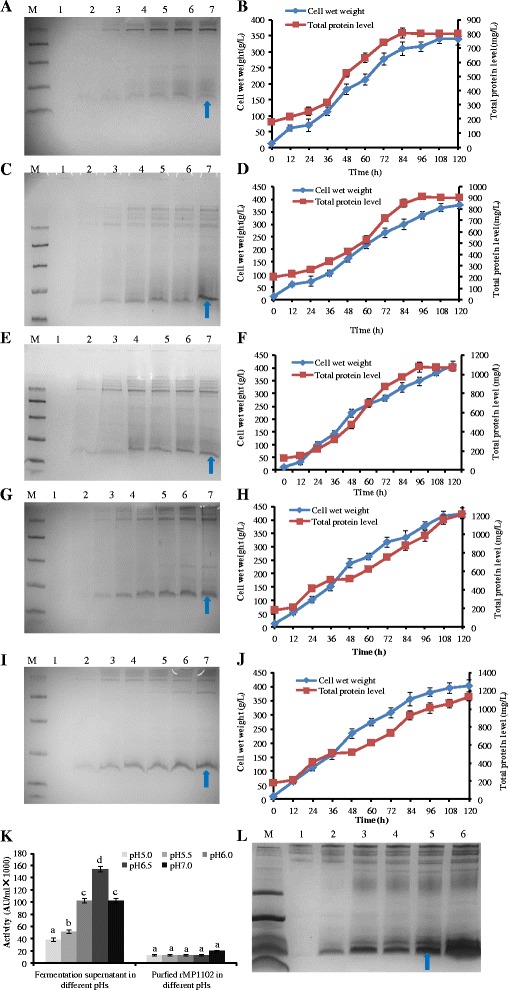Figure 5.

Effects of different pHs on the yield of rMP1102 via fed-batch fermentation. A, C, E, G, I: Tricine-SDS-PAGE analyses of the fermentation supernatants of P. pastoris GAPMP1102 in pHs of 5.0, 5.5, 6.0, 6.5 and 7.0, respectively. Lane M: a total of 5 μl of protein molecular weight marker (from top to bottom: 40, 25, 15, 10, 4.6 and 1.7 kDa). Lanes 1–7: Supernatants (10 μl each) harvested at 0, 24, 48, 72, 96, 108 and 120 h of cultivation, respectively. The arrow indicates rMP1102. B, D, F, H, J: Cell wet weights and total protein levels of the fermentation supernatants of P. pastoris GAPMP1102 in pHs of 5.0, 5.5, 6.0, 6.5 and 7.0, respectively. K: Antimicrobial activity of the fermentation supernatants of P. pastoris GAPMP1102 in pHs of 5.0, 5.5, 6.0, 6.5 and 7.0, respectively. L: Tricine-SDS-PAGE analysis of the fermentation supernatant of P. pastoris AOXMP1102 in pH 5.0. Lane M: a total of 5 μl of protein molecular weight marker (from top to bottom: 40, 25, 15, 10, 4.6 and 1.7 kDa). Lanes 1–6: supernatants (10 μl each) harvested at 0, 24, 48, 72, 96, and 120 h of cultivation, respectively. The arrow indicates rMP1102. Each data point is the average of three replicates, and the error bars represent the standard deviation. Different lowercase letters (a, b, c, d) above the bar indicate significant differences between groups (P < 0.05).
